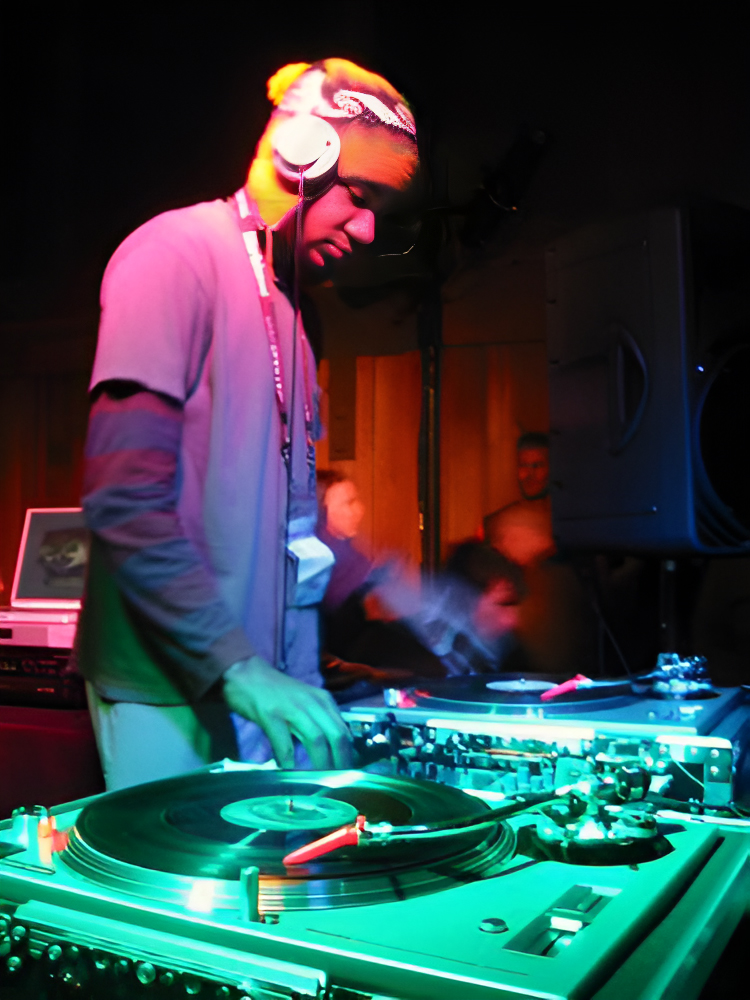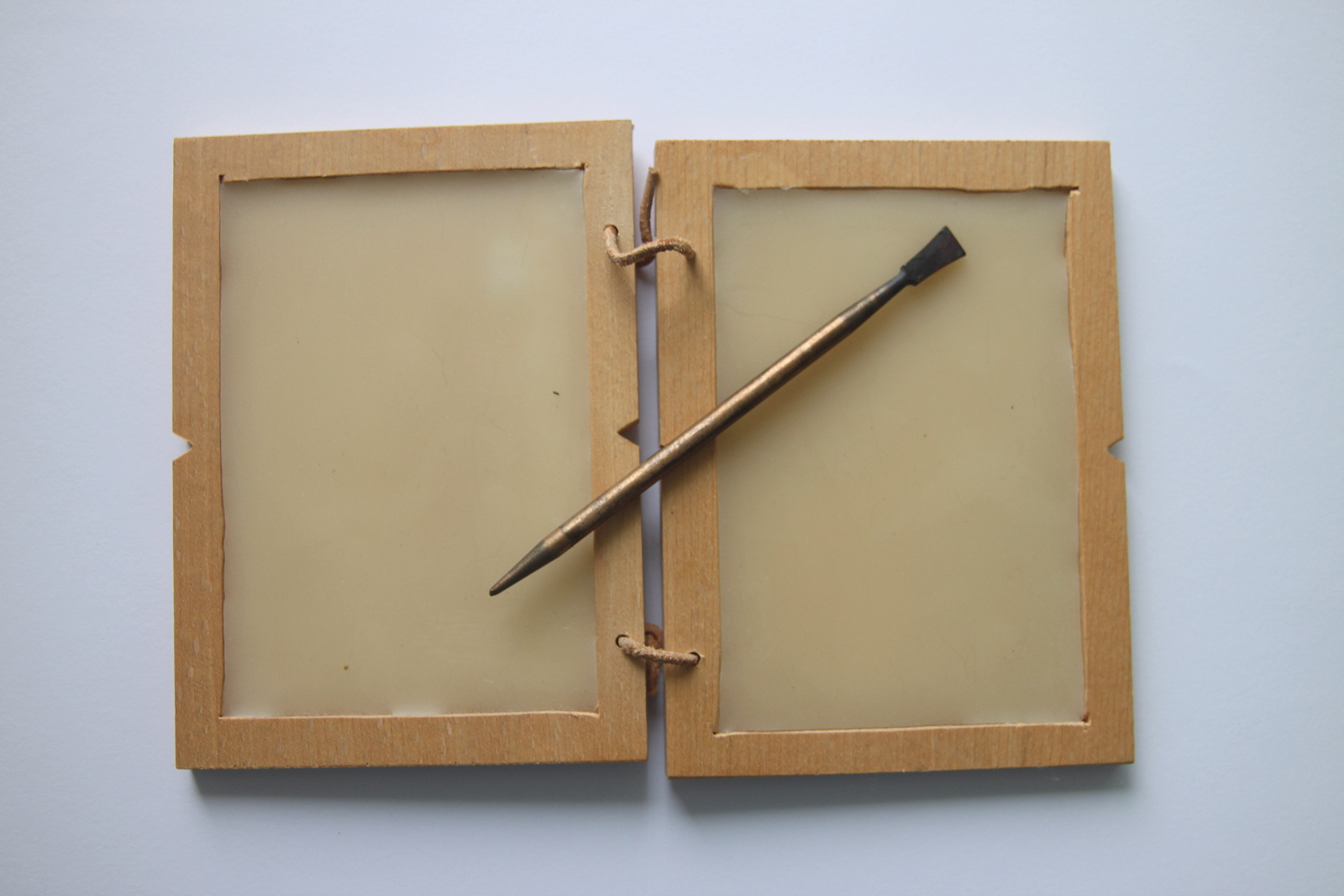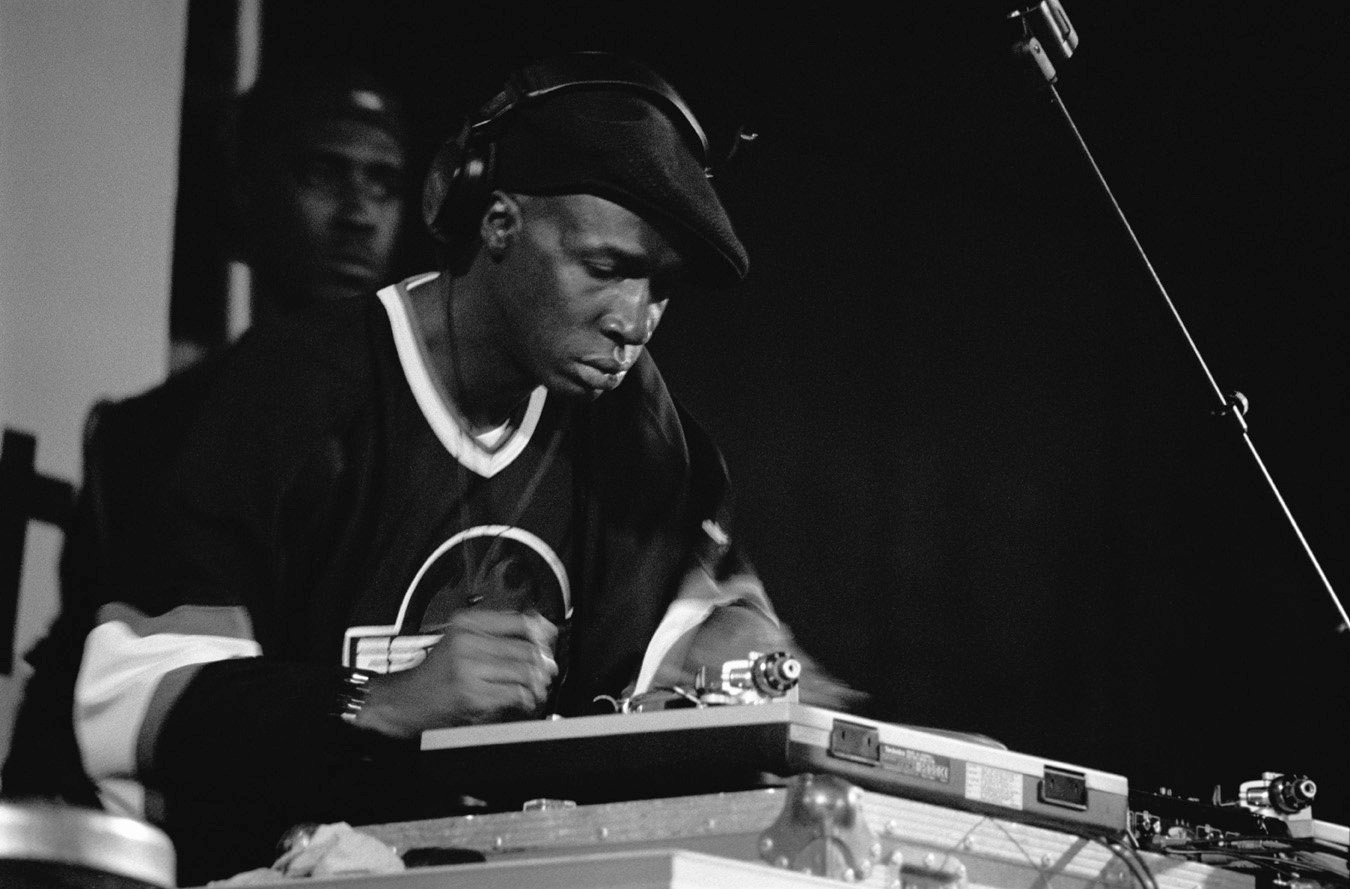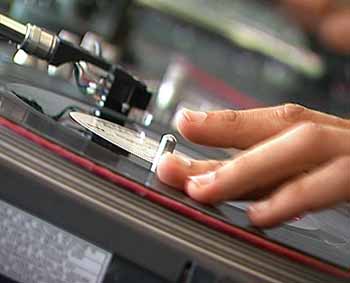|
Needle Drop (DJing)
The needle drop is a technique used in hip hop deejaying. The DJ sets a record spinning, then drops the stylus on the turntable at the exact point where they want playback to begin without previously cueing up the record.Roseman, Jordan''Audio Mashup Construction Kit''/ref> Since there is no time wasted in cuing, the needle drop allows faster movements by the DJ. The needle drop method was developed in the 1970s by Grand Wizzard Theodore at around the same time that he and Grandmaster Flash were pioneering scratching Scratching, sometimes referred to as scrubbing, is a DJ and Turntablism, turntablist technique of moving a vinyl record back and forth on a phonograph, turntable to produce percussive or rhythmic sounds. A crossfader on a DJ mixer may be used to .... Sticker method In the sticker method of locating the sample or break, a DJ uses a colored "dot" label to mark the sample to be used. Marking a record involves several steps. The first step is to locate the desired s ... [...More Info...] [...Related Items...] OR: [Wikipedia] [Google] [Baidu] |
Hip Hop Music
Hip-hop or hip hop (originally disco rap) is a popular music Music genre, genre that emerged in the early 1970s from the African Americans, African-American community of New York City. The style is characterized by its synthesis of a wide range of musical techniques. Hip-hop includes rapping often enough that the terms can be used synonymously. However, "hip-hop" more properly denotes an entire hip-hop culture, subculture. Other key markers of the genre are the disc jockey, turntablism, scratching, beatboxing, and hip hop production, instrumental tracks. Cultural interchange has always been central to the hip-hop genre. It simultaneously borrows from its social environment while commenting on it. The hip-hop genre and culture emerged from block parties in ethnic minority neighborhoods of New York City, particularly The Bronx, Bronx. DJs began expanding the instrumental Break (music), breaks of popular records when they noticed how excited it would make the crowds. The extend ... [...More Info...] [...Related Items...] OR: [Wikipedia] [Google] [Baidu] |
Disc Jockey
A disc jockey, more commonly abbreviated as DJ, is a person who plays recorded music for an audience. Types of DJs include Radio personality, radio DJs (who host programs on music radio stations), club DJs (who work at nightclubs or music festivals), mobile DJs (who are hired to work at public and private events such as weddings, parties, or festivals), and turntablism, turntablists (who use record players, usually turntables, to manipulate sounds on phonograph records). Originally, the "disc" in "disc jockey" referred to shellac and later vinyl records, but nowadays DJ is used as an all-encompassing term to also describe persons who DJ mix, mix music from other recording media such as compact cassette, cassettes, Compact disc, CDs or digital audio files on a CDJ, controller, or even a laptop. DJs may adopt the title "DJ" in front of their real names, adopted pseudonyms, or stage names. DJs commonly use audio equipment that can play at least two sources of recorded music simul ... [...More Info...] [...Related Items...] OR: [Wikipedia] [Google] [Baidu] |
Gramophone Record
A phonograph record (also known as a gramophone record, especially in British English) or a vinyl record (for later varieties only) is an analog sound storage medium in the form of a flat disc with an inscribed, modulated spiral groove. The groove usually starts near the outside edge and ends near the center of the disc. The stored sound information is made audible by playing the record on a phonograph (or "gramophone", "turntable", or "record player"). Records have been produced in different formats with playing times ranging from a few minutes to around 30 minutes per side. For about half a century, the discs were commonly made from shellac and these records typically ran at a rotational speed of 78 rpm, giving it the nickname "78s" ("seventy-eights"). After the 1940s, "vinyl" records made from polyvinyl chloride (PVC) became standard replacing the old 78s and remain so to this day; they have since been produced in various sizes and speeds, most commonly 7-inch discs pla ... [...More Info...] [...Related Items...] OR: [Wikipedia] [Google] [Baidu] |
Stylus
A stylus is a writing utensil or tool for scribing or marking into softer materials. Different styluses were used to write in cuneiform by pressing into wet clay, and to scribe or carve into a wax tablet. Very hard styluses are also used to Engraving, engrave metal, and the slate and stylus system is used to punch out dots to write in Braille. Styluses are held in the hand and thus are usually a narrow elongated shape, similar to a modern ballpoint pen. Many styluses are heavily curved to be held more easily. The word ''stylus'' is also used to describe Stylus (computing), computer styluses used to assist in navigating or providing more precision when using touchscreens. Etymology ''Stylus'' comes from the Latin —the spelling ''stylus'' arose from an erroneous connection with Greek (), 'pillar'.''Oxford Latin Dictionary'', s.v. "stilus" (2012). The Latin word had several meanings, including "a long, sharply pointed piece of metal; the stem of a plant; a pointed instrume ... [...More Info...] [...Related Items...] OR: [Wikipedia] [Google] [Baidu] |
Turntables
A phonograph, later called a gramophone, and since the 1940s a record player, or more recently a turntable, is a device for the mechanical and analogue reproduction of sound. The sound vibration Waveform, waveforms are recorded as corresponding physical deviations of a helical or spiral groove engraved, etched, incised, or impressed into the surface of a rotating cylinder or disc, called a ''Phonograph record, record''. To recreate the sound, the surface is similarly rotated while a playback #Stylus, stylus traces the groove and is therefore vibrated by it, faintly reproducing the recorded sound. In early acoustic phonographs, the stylus vibrated a Diaphragm (acoustics), diaphragm that produced sound waves coupled to the open air through a flaring Horn loudspeaker, horn, or directly to the listener's ears through stethoscope-type earphones. The phonograph was invented in 1877 by Thomas Edison; its use would rise the following year. Alexander Graham Bell's Volta Laboratory an ... [...More Info...] [...Related Items...] OR: [Wikipedia] [Google] [Baidu] |
Slip-cueing
Slip-cueing is a DJ technique for cueing music with turntables. The DJ holds a record still while the platter rotates underneath the slipmat and releases it at the right moment. In this way the record attains the right speed almost immediately, with no need to wait for the heavy platter to accelerate. Slip-cueing was introduced to the disco scene by Francis Grasso, but the technique had been used for many years in the radio broadcast industry; it was often used by radio stations to match a following song to the preceding song, preserving the beat. Grasso used this method to great effect in order to create a continuous flow of music for a nightclub dance floor. See also * Cue (audio) * Needle drop (DJing) * Beatmatching Beatmatching or pitch cue is a DJ technique of pitch shifting or time stretching an upcoming track to match its tempo to that of the currently playing track, and to adjust them such that the beats (and, usually, the bars) are synchronized� ... Sources ... [...More Info...] [...Related Items...] OR: [Wikipedia] [Google] [Baidu] |
Grand Wizzard Theodore
Theodore Livingston (born March 5, 1963), better known as Grand Wizzard Theodore, is an American musician and DJ. He is widely credited as the inventor of the scratching technique. In addition to scratching, he gained credibility for his mastery of needle drops and other techniques which he invented or perfected. Early life Born in the Bronx, New York, Theodore's brother, Mean Gene, was his mentor, who began teaching him the technique of DJing at an early age. In 1975, Theodore was playing records in his bedroom with the volume all the way up. Furious with the noise, his mother entered the room and told Theodore to lower the volume, or she would turn off the music. According to Theodore, while his mother was standing in the doorway scolding him, he was still holding the record down with his hand, "rubbing the record back and forth", causing a scratching sound. After his mother left, Theodore realized he liked the sound, and thought it would be a good idea to incorporate it into ... [...More Info...] [...Related Items...] OR: [Wikipedia] [Google] [Baidu] |
Grandmaster Flash
Joseph Robert Saddler (born January 1, 1958), known by his stage name Grandmaster Flash, is a Barbadian-American musician and DJ. He created a DJ technique called the Quick Mix Theory. This technique serviced the break-dancer and the rapper by elongating the drum breaks through the use of duplicate copies of vinyl. This technique gave birth to cutting and scratching. It also gave rappers better music with a seamless elongated bed of beats to speak on. He also invented the slipmat. He is the founder and creator of Grandmaster Flash and the Furious Five, the first rap group to be inducted into the Rock and Roll Hall of Fame in 2007. In 2019 he became the first hip hop artist to be honoured with the Polar Music Prize. On May 21, 2022, he acquired an honorary doctorate in Fine Arts from Buffalo State University. On June 1, 2023, he was awarded an honorary doctorate in music from Lehman College in the Bronx, NY. On August 4, 2023, Saddler was issued a proclamation from the city of New ... [...More Info...] [...Related Items...] OR: [Wikipedia] [Google] [Baidu] |
Scratching
Scratching, sometimes referred to as scrubbing, is a DJ and Turntablism, turntablist technique of moving a vinyl record back and forth on a phonograph, turntable to produce percussive or rhythmic sounds. A crossfader on a DJ mixer may be used to fade between two records simultaneously. While scratching is most associated with Hip-hop, hip hop music, where it emerged in the mid-1970s, from the 1990s it has been used in some styles of Electronic dance music, EDM like techno, trip hop, and house music and rock music such as rap rock, rap metal, rapcore, and nu metal. In Hip-hop culture, hip hop culture, scratching is one of the measures of a DJ's skills. DJs compete in scratching competitions at the DMC World DJ Championships and IDA (International DJ Association), formerly known as International Turntablist Federation, ITF (International Turntablism, Turntablist Federation). At scratching competitions, DJs can use only scratch-oriented gear (turntables, DJ mixer, digital vinyl syste ... [...More Info...] [...Related Items...] OR: [Wikipedia] [Google] [Baidu] |






